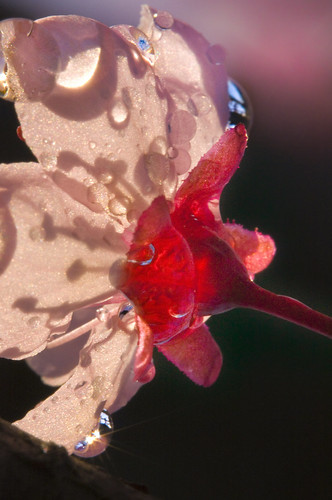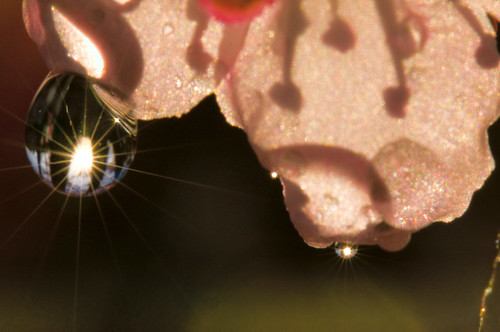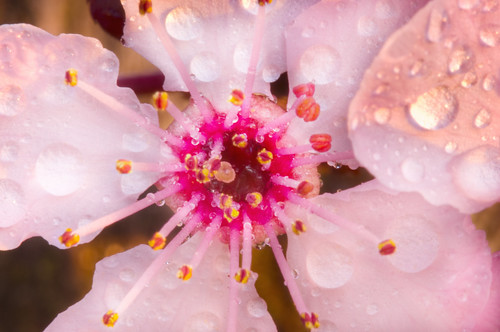I’ve written about using noise for aesthetic purposes. I’ve also explored the possibility that noise generated by boosting a camera’s sensitivity (ISO) will become a historical artifact and thing of the past. I’ve also explained my strategies for effective noise post processing.
It’s time to take a look at a technical challenge that decreased noise generation at higher ISOs solves.
The other day I went down the block to photograph apple and cherry blossoms close-up on a sun-drenched but windy afternoon following days of rain. The challenge here is that for these extreme macros I almost always want as much depth as I can get so that reflections in water drops and the surface of the blossom all are in focus. At ISO 100, my typical setting for quality work, this implies a long shutter speed even on a bright day. Shutter speeds longer than a second just don’t work when there is a breeze!
If I could get acceptable results in terms of noise, boosting the ISO would seem to be the solution. At higher ISOs it would seem to be easy to get the shutter speed up from the 5-10 second range to something like 1/25 of second. At 1/25 of a second, I would need the Gods of timing with me, but I could wait for a still moment and have a decent chance.
I think noise isn’t a detrimental issue in these photos, so boosting the ISO for maximum depth of field at faster shutter speeds works to make these technically “impossible” photos possible.
You can judge for yourself from these results. All were taken using my Nikon D300, tripod mounted, with my 200mm f/4 macro lens and a 36mm extension tube. The lens was stopped down as far as possible (with slight variations in recorded aperture, as noted), so the only significant exposure differences between the photos were ISO, shutter speed (and, on the other side of the exposure equation, the amount of available light at the time of the photo because natural light does not stay constant in the late afternoon).
ISO 1,000 at 1/25 of a second and f/36:
View this image larger.
ISO 640 at 1/60 of a second and f/36:
View this image larger.
ISO 640 at 1/60 of a second and f/40:
View this image larger.
For comparison, here’s a ringer, shot conventionally at ISO 100 and 6 seconds and f/45. The blossom was relatively steady despite the wind because of its position relative to the tree trunk. This was my last shot of the series as the sun set. I like the soft quality of the blossom in the sunset light, but you’d be hard put to say that the noise characteristics are significantly better than its high ISO bethren.
View this image larger.




Pingback: Cherry Blossoms | Photoblog 2.0